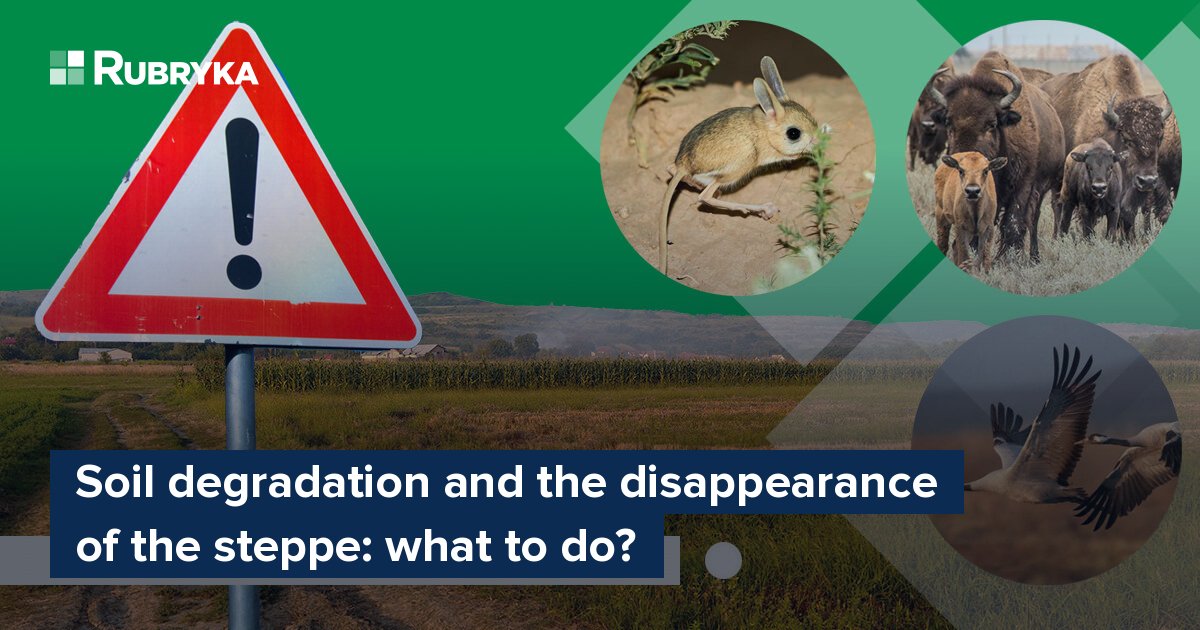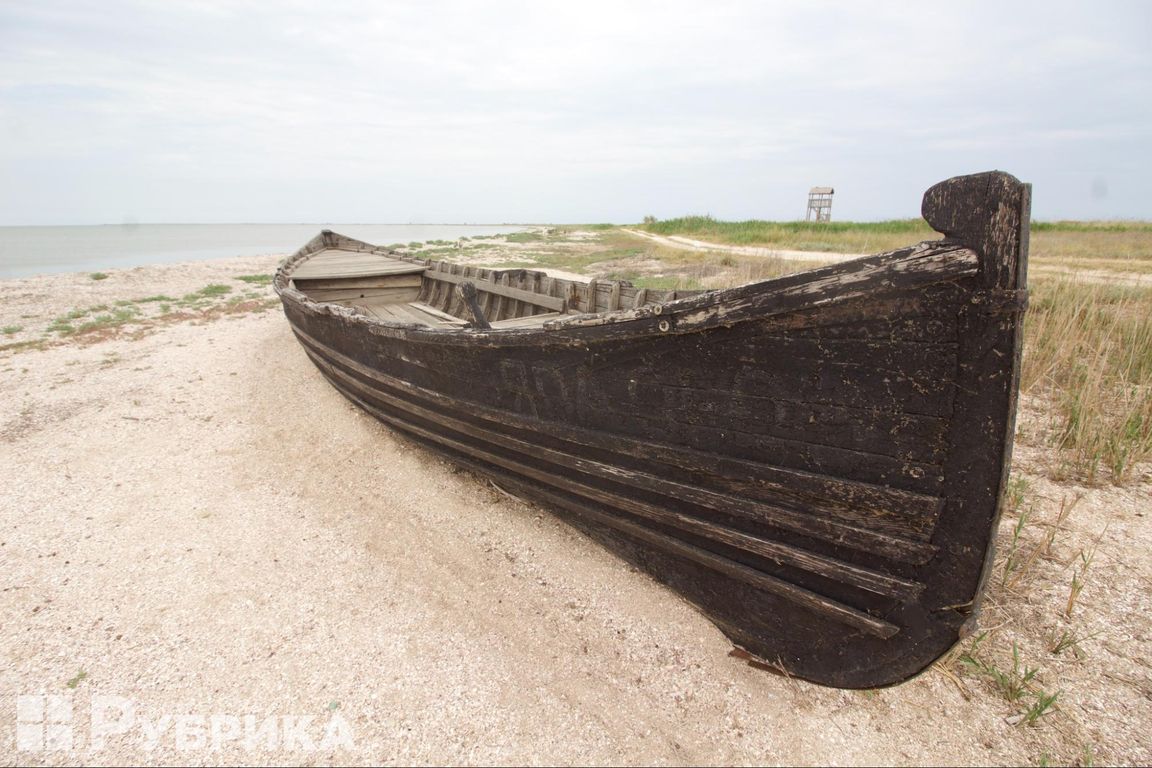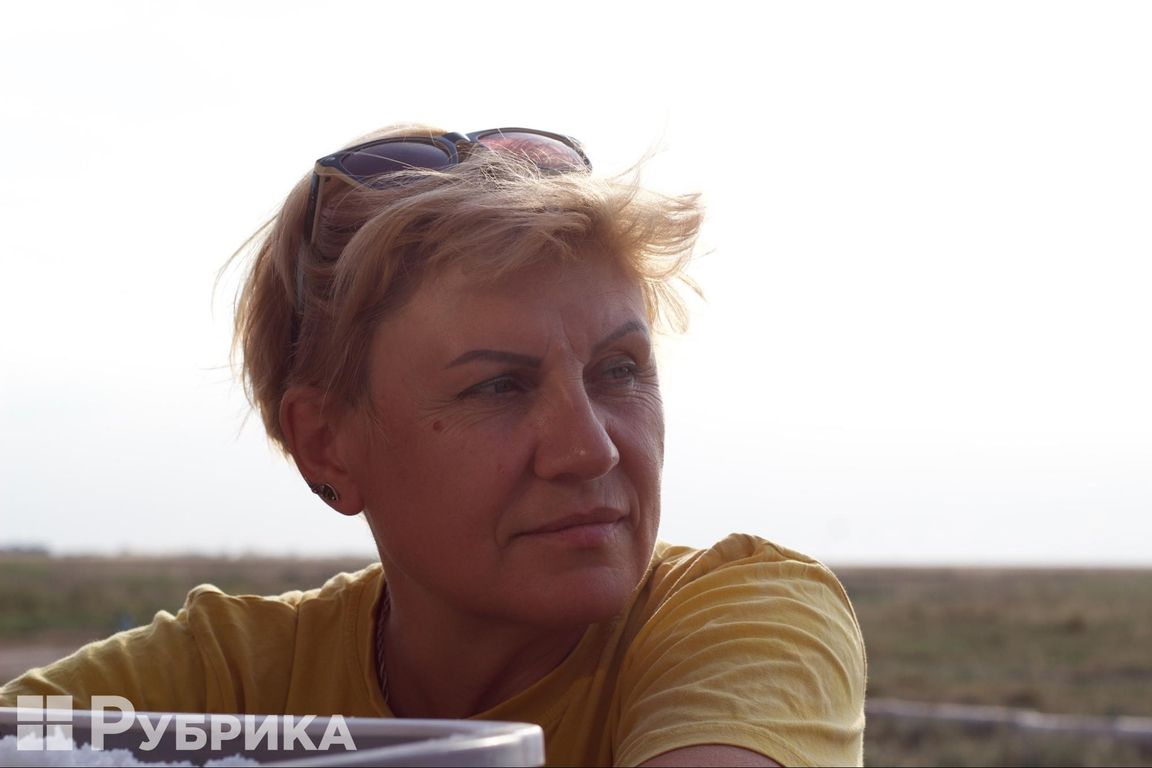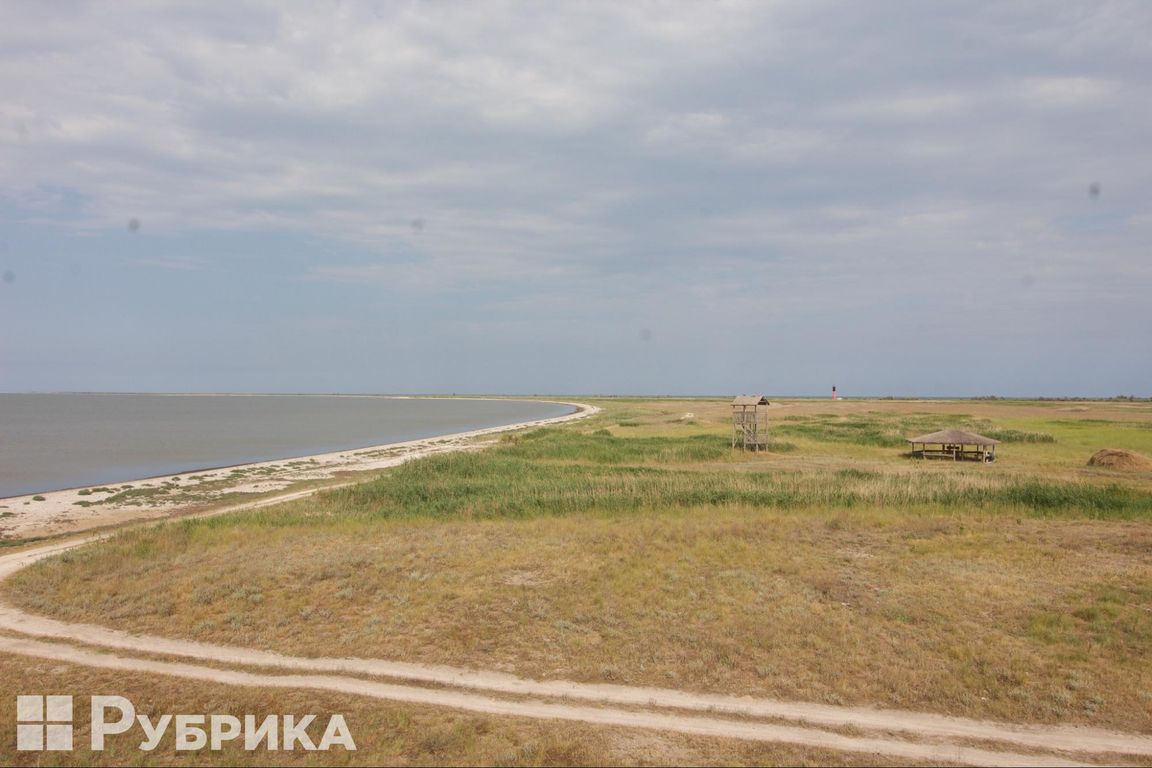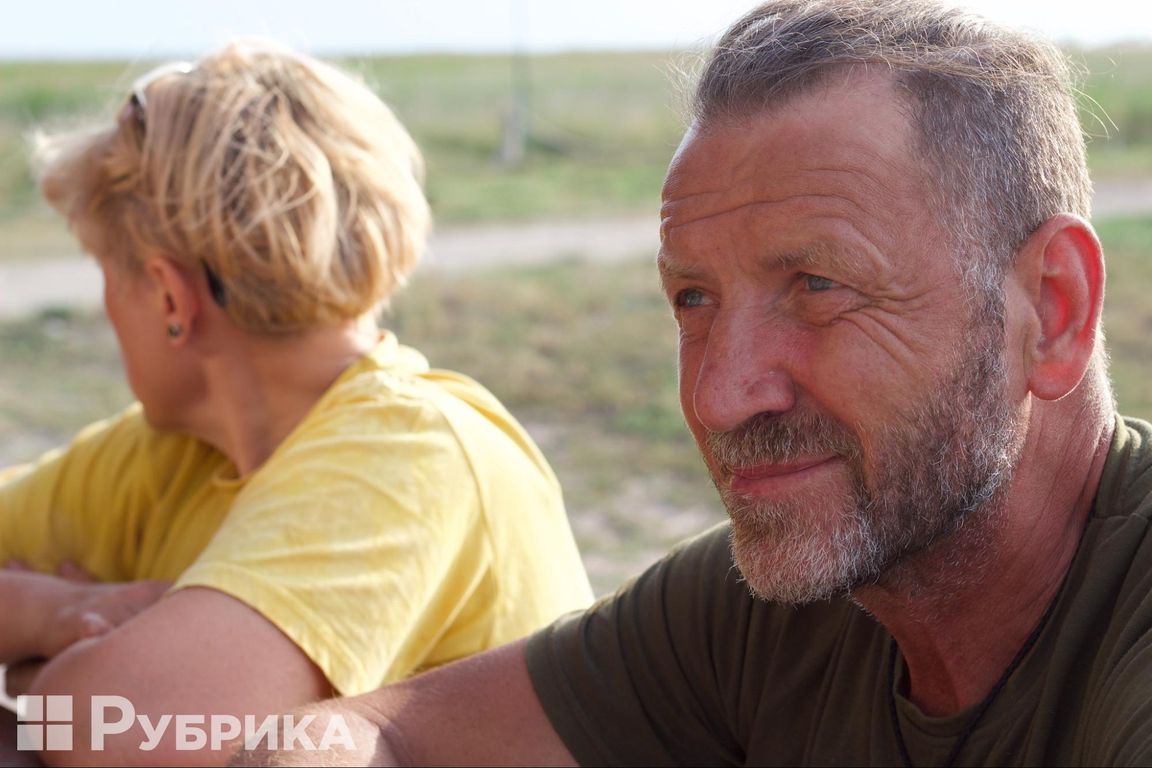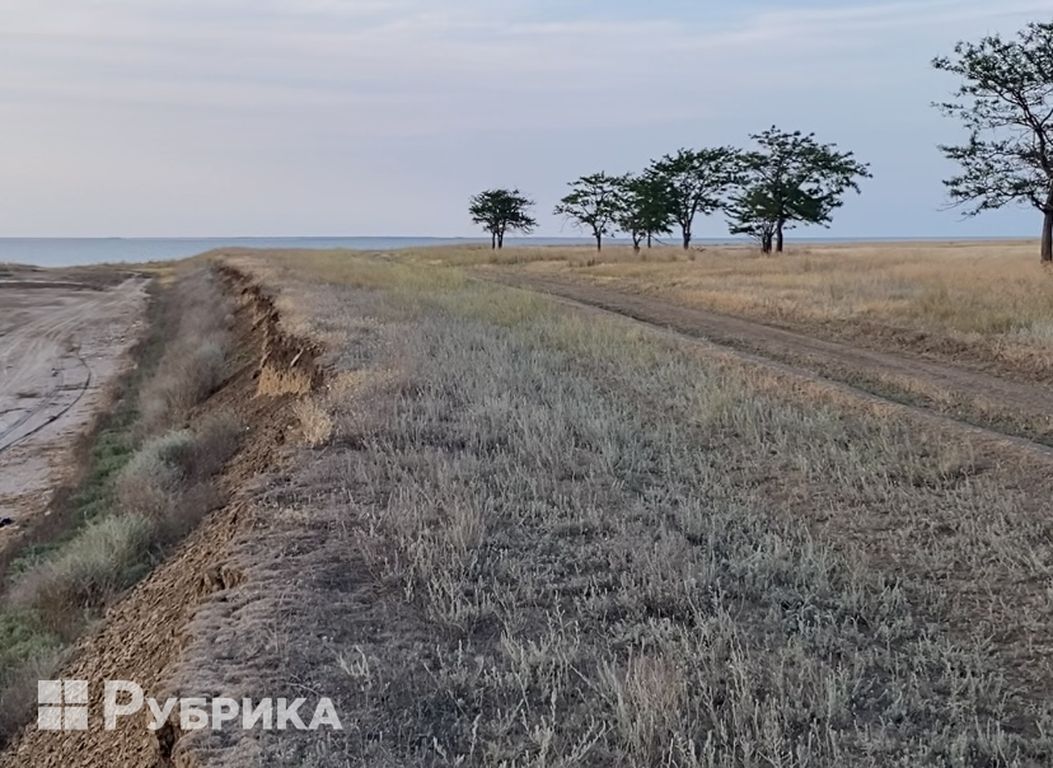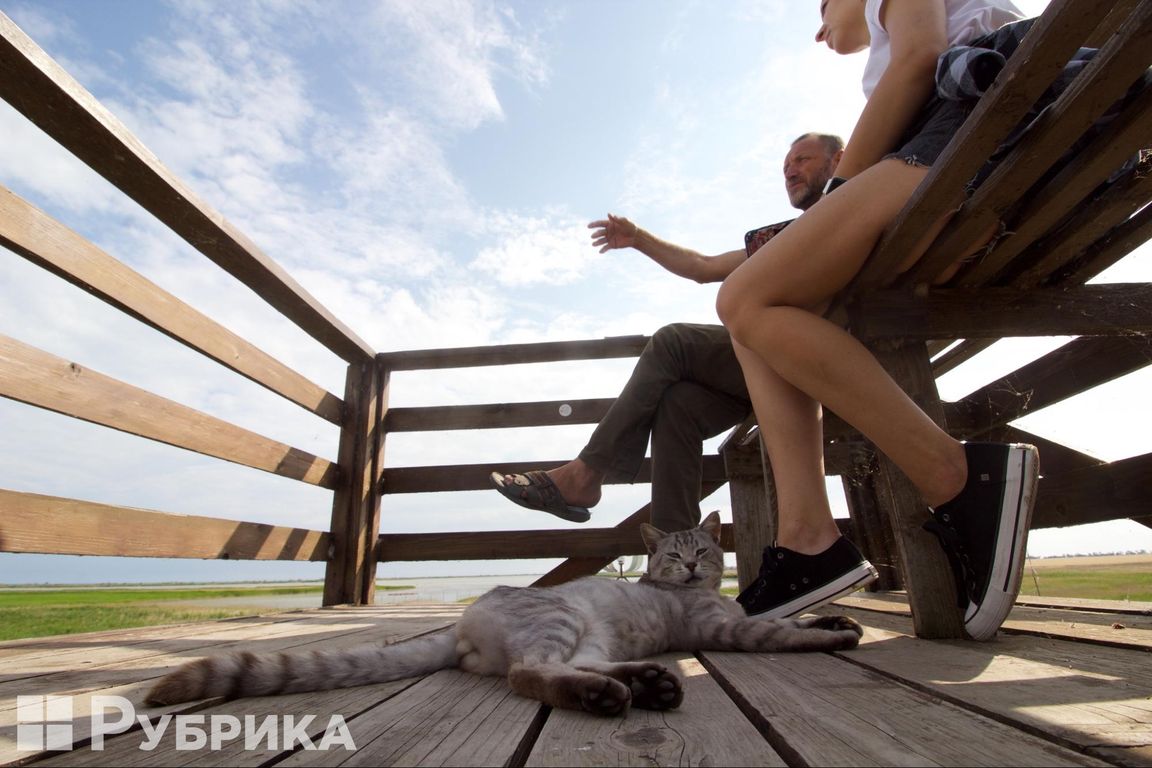
Recently, Rubryka visited the Tuzly Lagoons National Nature Park. This material is the fourth in a series of long reads about the problems of the Ukrainian environment, both those that existed before the start of the full-scale war with russia, and those that arose due to active hostilities on our territories. We decided to dedicate the last topic to the Ukrainian lands threatened with total devastation.
The "scientific trio" helped us in this: Doctor of Biological Sciences Ivan Tryfonovych Rusev, director of the park, chief naturalist Iryna Mykhailivna Vykhrystiuk and leading scientific employee of the Tuzly Lagoons National Nature Park, Olena Mykolayivna Popova.
What is the problem?
Soil degradation
During the last 50-70 years, because of the active development of agriculture and land plowing, Ukrainian soils have undergone significant degradation, which may eventually lead to the complete desolation of the land. We will not be able to get quality products satisfactory to our needs in vitamins and other nutritious elements. Scientists have already noticed this negative effect:
"If you compare the productive value of the land now and 50 years ago, the difference is enormous," says Iryna Mykhailivna. "If you ate, for example, a piece of bread 50 years ago and now, you would feel the difference because the nutritional value of food products 50 years ago was much higher. To be full, you have to eat 3-4 times more food now."
According to the chief naturalist, the use of chemicals during the cultivation of fruits and vegetables leads to this:
"Bread, tomatoes, cucumbers — everything grown nowadays has less nutritional value. It is because we use a large number of chemicals, making it possible to grow more volumes of products. The big volume is fast money. That's why we lose in quality," says the expert and emphasizes that everything in nature is connected, and even products of a different origin have less nutritional value. It also applies to milk and meat.
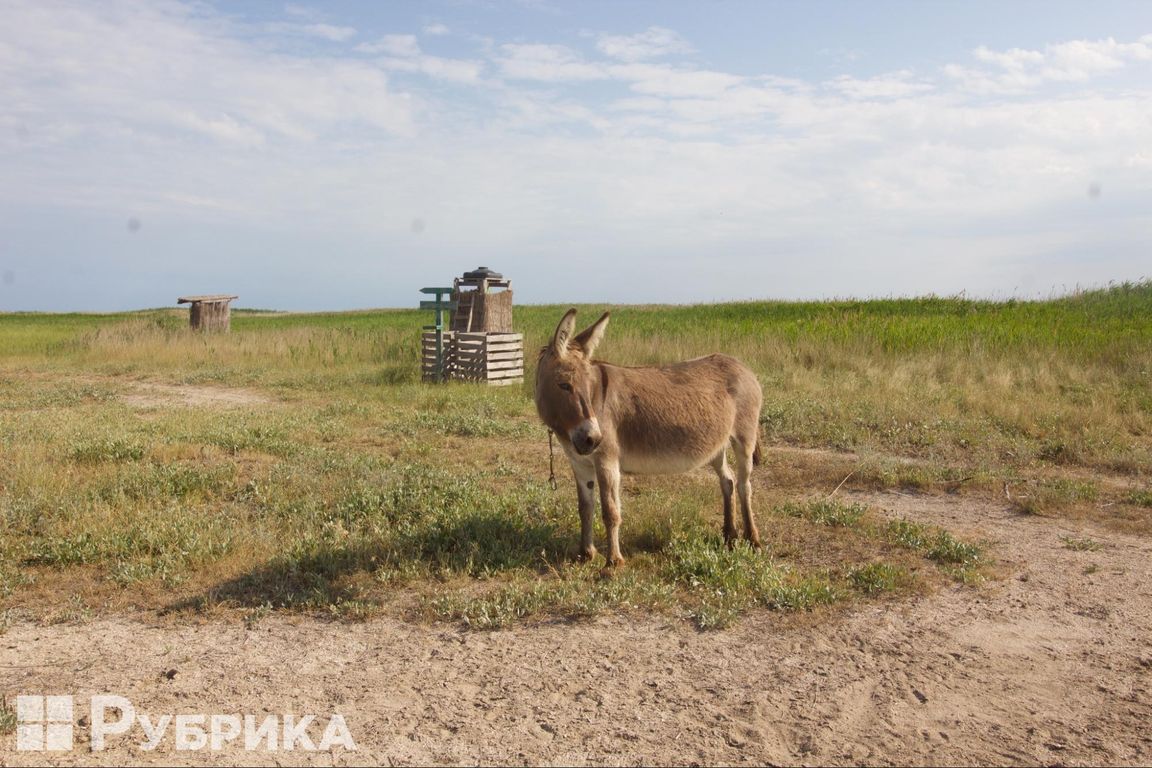
In the photo: Tuzly Lagoons National Nature Park. It is what natural steppe territories look like: alive, inhabited by animals and vegetation
More than half of Ukrainian lands are arable land, formerly destroyed steppes
More than 90% of natural steppe territories are now converted into arable land. Mainly all of them are located in the south of Ukraine:
"Now, the tragedy for the country is the extent of arable land. Compared to the total area of Ukraine, it is 56–58%. It is a huge percentage," Iryna Vykhrystiuk emphasizes.
Because of this, the fertile layer of the earth is destroyed: there is no vegetation left, and humus also disappears — it simply has nothing to form from. Olena Popova explains how this process takes place:
"The main value of using soil is that it has fertility, and thanks to it, we can plant something and get some harvest. The most fertile soils — chernozems — are formed under perennial natural vegetation. When people have destroyed this steppe vegetation, nothing is left to create this fertility. Instead of trying to maintain this fertility in agricultural plots, farmers do the opposite. Instead of somehow using the plant residues to decompose and form humus gradually, they burn the plant residues, which further reduces the possibility of fertility formation," explains the scientist.
At the same time, this amount of cultivated land gives almost nothing to wildlife because, together with the fertility of the soil, we reduce the area where hundreds and thousands of species of insects and birds live, which help humans maintain the balance in the ecosystem. It even brings climate change closer because the land plowed to become a field cannot deposit carbon dioxide.
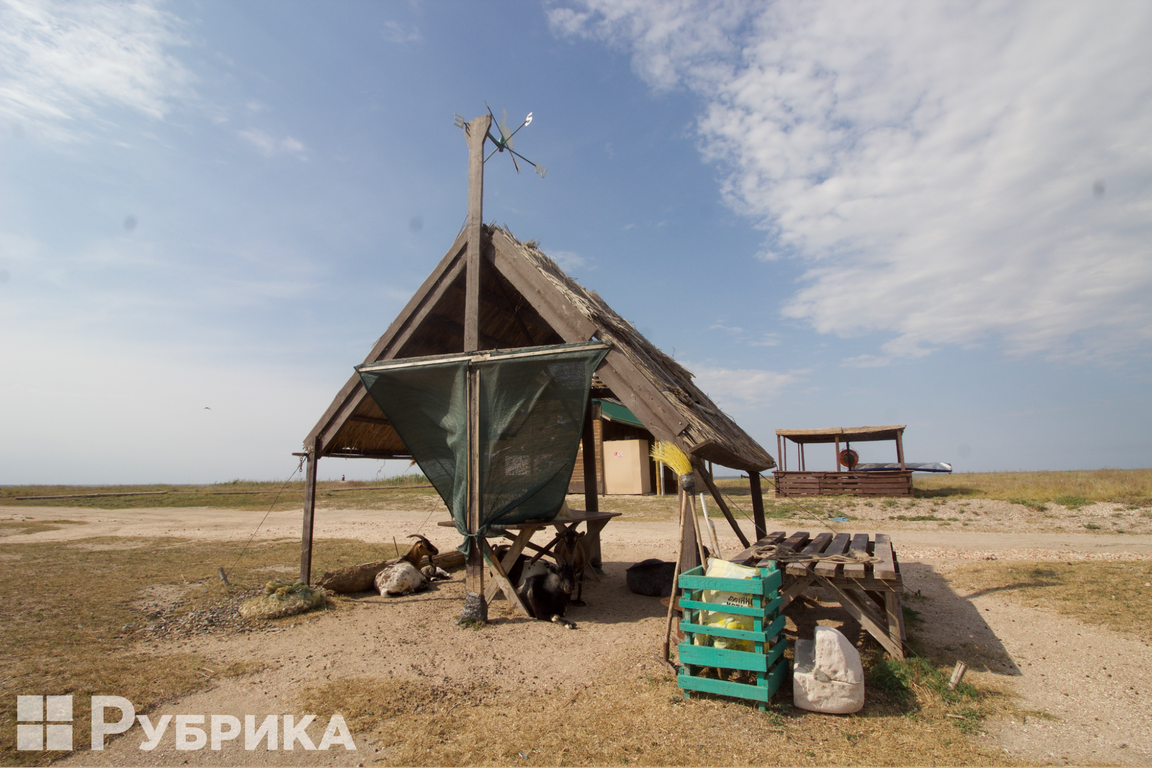
In the photo: the territory of the Tuzly Lagoons National Nature Park. A gazebo near the border, which on hot days serves as a resting place for goats
What is the solution?
Restoration of the steppe
Scientists of the Tuzly estuaries struggled with the problem of plowing. Ivan Rusev said that in 2015 when he became the director of the park, he immediately noticed the main problem: 80% of the territory was stolen by local farmers. They divided this territory among themselves and turned it into arable land. Over the years, the park has tried to reclaim its parts to preserve and restore natural plant communities — we can see the visible result of such work from the tower we are on:
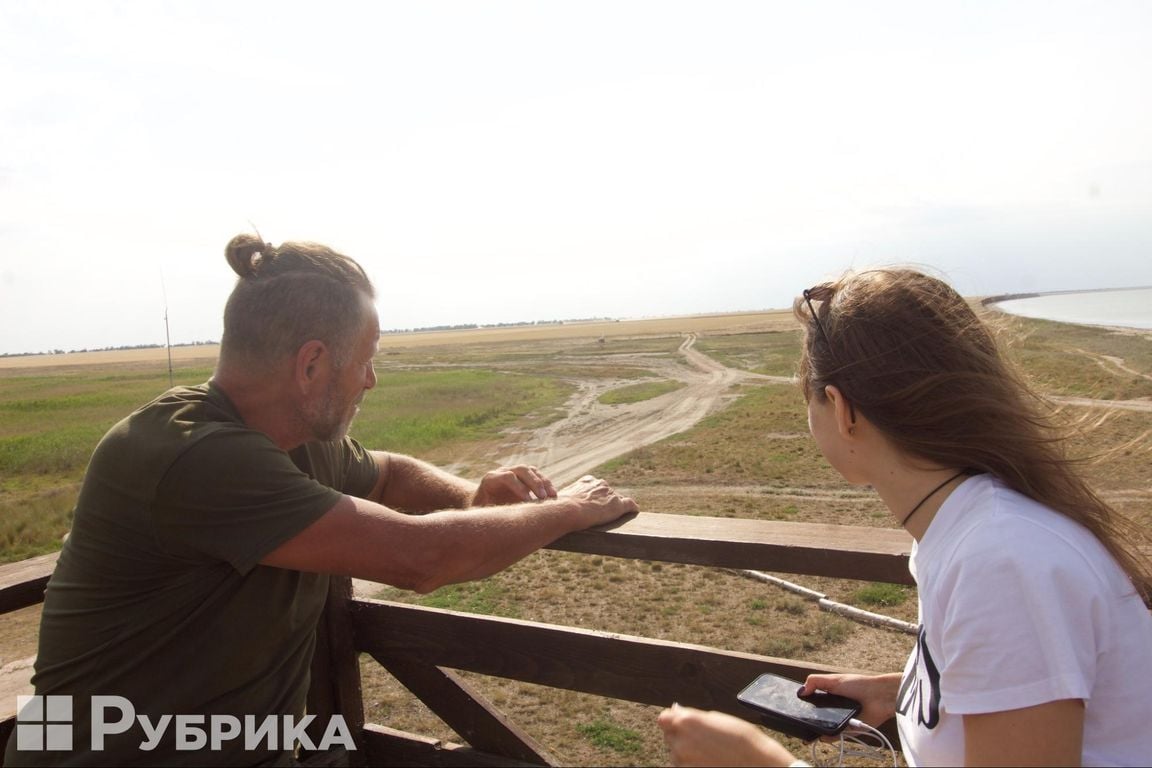
In the photo: Ivan Tryfonovych Rusev and Rubryka journalist Viktoriya Gubareva. A scientist looks at an area "reclaimed" from farmers, where natural steppe vegetation has been restored for several years
"Here is this section," Ivan Rusev points out. "People left 5 meters from the water cut in the direction of the highway, and the rest were stolen and plowed. We pushed them outside the park three years ago, and since then, we have been watching how the steppe is being restored. It is a long process, and it takes at least ten years for the main plants to appear, which should form natural communities."
However, with the appearance of these plants on former arable land, there are certain difficulties. Olena Vykhrystiuk explained that there are certain regularities in restoring steppe vegetation. One of them is the possibility of bringing fruits, seeds, and other parts of steppe plants to this territory, with the help of which they could reproduce. With each previously cultivated area, a source must be nearby from where this seed can be carried. For example, other regions where steppe vegetation remains.
The first stage of recovery after plowing and growing crops is weeding. First, annual weeds settle there, then perennial weeds, and only after that do perennial steppe plants. Then the species composition increases.
Unfortunately, there is no source of fruits and seeds near the border of such a plot, and the natural vegetation on the plowed territory was wholly destroyed, so the recovery is slow, and the park employees have to "help" nature recover:
"In general, there are certain methods when machines are used for sowing on large areas, hectares, but this requires money, so our experiments with screening some wild plants were still incomplete. We did all this with our own hands," says Olena Popova.
Currently, annual weeds have already grown in this problem area. Some tiny patches already have perennial weeds, and even some are typical for the surrounding areas. However, for this experiment to work in other territories, it is first necessary to achieve the liberation of these territories from farmers.
How does it work?
Is it possible to speed up the restoration of the steppes?
But will the steppe recover without human intervention? Biologist Olena Popova claims that it is possible, and there are already such examples in the Tuzly estuaries in other areas, where the sources of the seeds of steppe plants were closer than in the area near the border.
"In general, the vegetation as such recovers quite quickly if there is somewhere for the seeds to be introduced. But in current conditions, biocenoses are physically and chemically damaged on a large Ukrainian territory. There is a possibility of constant explosions until the territory is demined — and this is already new damage and soil poisoning by the substances left by the explosions. It will definitely not be a natural area, but a polluted one that will take many years to recover," she says.
And in this case, there is also a solution because there are ways to clean it from the "chemicals of war." For example, phytoremediation is improving the environment with the help of plants. Some plants can absorb these substances from the environment, but then they need to be correctly disposed of, and this also requires specific work, so this procedure is quite long and expensive. Ukraine will need additional resources to make damaged soils safe and fertile again.
Another option for restoring the steppes, which has already been implemented in Ukraine with the EU's financial support, is the agrosteppe method. It is faster, and its essence is to sow the territory with a mixture of several dozen species of plants. The species composition of the plants is chosen in accordance with the species original to these territories. Over one or two years, these plants grow, and this is how the steppe begins to form.
Will it definitely work?
Is it realistic to give 30% of cultivated land to nature reserves?
Reducing the area of arable land has long been a goal of scientists involved in agriculture. It is about reducing the arable land to 37-41%. The same is required by one of the EU directives, according to which we must turn 30% of agricultural land into nature reserves.
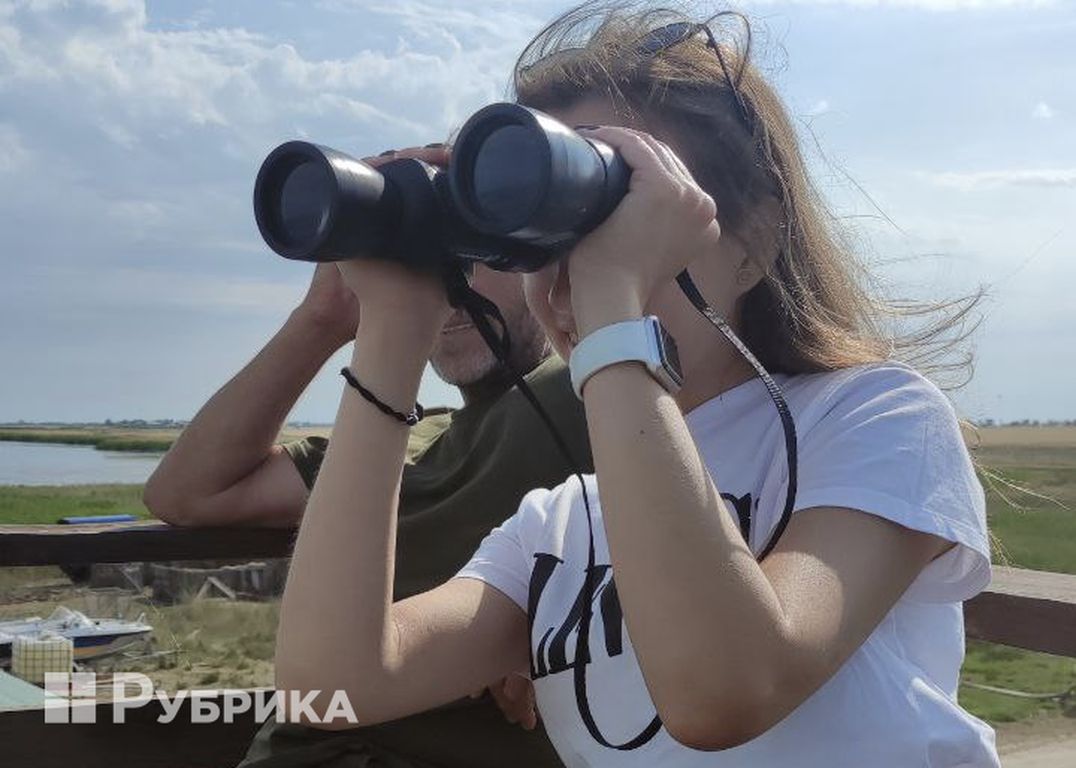
In the photo: Ivan Tryfonovych Rusev and a journalist from Rubryka. We are looking for solutions to environmental problems
"This is a classic ecological scheme of sustainable development: there should be no less than 30% of natural territories," explains Ivan Rusev. "I am sure: the concept developed by the world's great ecologists not only has the right to life, but our government must implement it."
And making these lands natural reserves does not mean that we should leave these lands. Because simply taking away the source of livelihood from farmers and their primary income is not fair. And here, Iryna Vykhrystiuk offers an alternative: to create pastures in these territories and live off dairy production.
Photo for the material: Yevhenia Hapotchenko
The material was prepared as part of the competition "Environmental chronicles: how the invasion of the Russian Federation affects the environment of Ukraine," which is implemented by the NGO "Internews-Ukraine" with the financial support of Journalismfund.eu.

Why are Black Sea dolphins dying, and how long will we have to wait to restore their population?

War at sea: What's happening to life in waters of Black and Azov seas?

Estuaries may disappear forever: what needs to be done for the natural parks of Ukraine to save them?



